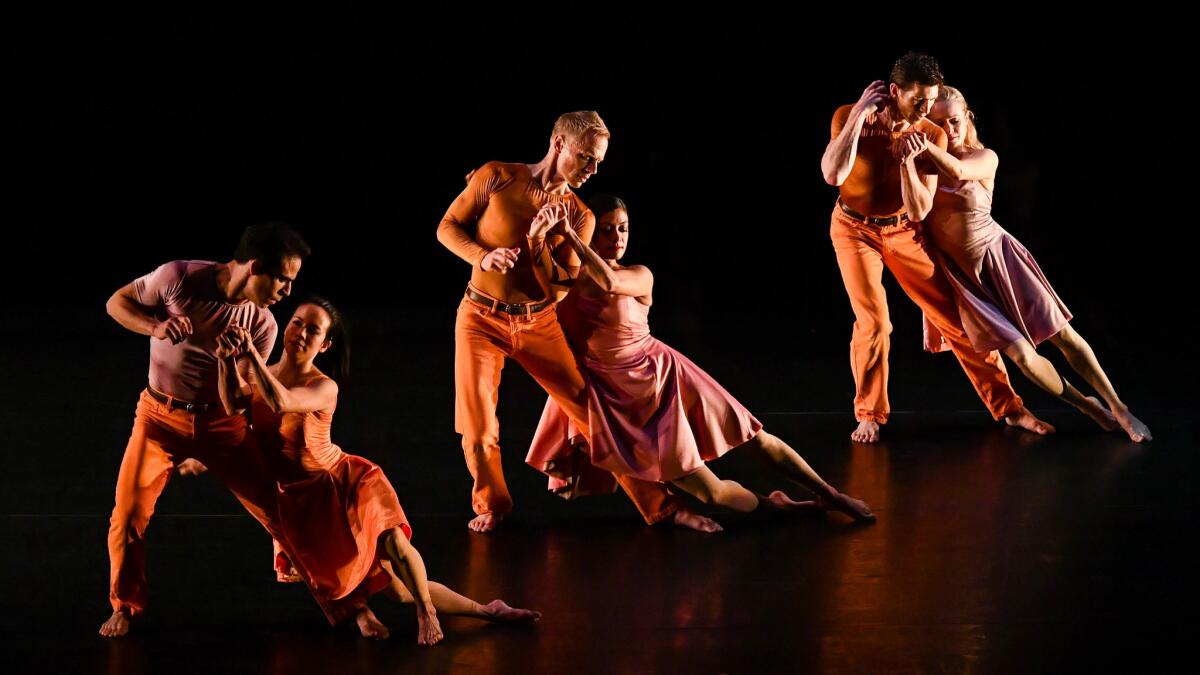Remembering Paul Taylor: Dancer Edward Villella on what made the choreographer such a ‘revelation’
- Share via
In 1959 a young Edward Villella looked into a dance studio and observed Paul Taylor working with choreographer George Balanchine on a solo described as a bug trapped in a glass of milk — part of a bold new ballet titled “Episodes.”
“I was amazed. He had become a creature. It was just remarkable, transcendent. It was unbelievably historic,” Villella recalled Thursday, after news of Taylor’s death at 88 spread through the dance world. “I hadn’t seen Paul Taylor dance before that, but I had heard of him, of course.”
At the time of that encounter nearly 60 years ago, Villella was a relatively new member of New York City Ballet on his way to his becoming one of the most accomplished and best-known American male dancers, on whom Balanchine created numerous enduring roles. At the same time, Taylor was making his mark in Martha Graham’s repertory of dramatic, heroic roles, while also presenting programs of his own, often radical new works, and preparing to strike out on independently.
“I found him a wonderful, sensitive human being,” Villella said. “And then I got to know his work — and it was a revelation.”
Encountering Taylor’s expansive and often unpredictable repertory, Villella was thrilled to find a choreographer whose stature he felt matched that of Balanchine, whom he revered.
“It was terrific to have that same kind of sense of a choreographer that one could respect — one with another very unique point of view,” Villella said.
It’s overwhelming, how each of his dances captures you in its own way. That happens every time you go to see his work.
— Edward Villella
When he became the founding artistic director of Miami City Ballet in 1986, Villella soon began adding Taylor’s dances to the company’s repertory.
“I wanted to give the dancers the opportunity to perform these gems,” he said. “Paul was always so gracious and generous.”
Performing those gems and others brought international recognition to Miami City Ballet, which Villella directed through 2012. While Balanchine’s ballets anchored the repertory, Villella presented more than half a dozen Taylor works over the years, including major pieces such as “Mercuric Tidings” (1982) and “Promethean Fire” (2002).
These gave his dancers a chance “to work in another very unique, extraordinary way,” Villella said. He cited Taylor’s “musicality, and the weight of the plié. You have to deal with the floor in a very different way. It opens up the sensitivities of dancers to be exposed to those kinds of things, at the highest level. So it did nothing but enrich our repertoire, and our dancers.”
Once back in New York, Villella and his wife, Linda, became loyal and devoted audience members for the annual Paul Taylor Dance Company season.
“It’s overwhelming how each of his dances captures you in its own way. That happens every time you go to see his work. Right to the end, there he was,” he said of the choreographer, whose final work premiered in March.
“One of the major figures of the previous century, until now, has left us,” Villella said. “That’s a huge hole. It just changes life. I had enormous regard and respect for him. He made a major impression on my life with the company in Miami, artistically, and had a major impact in the world of dance. “

See all of our latest arts news and reviews at latimes.com/arts.
More to Read
The biggest entertainment stories
Get our big stories about Hollywood, film, television, music, arts, culture and more right in your inbox as soon as they publish.
You may occasionally receive promotional content from the Los Angeles Times.










